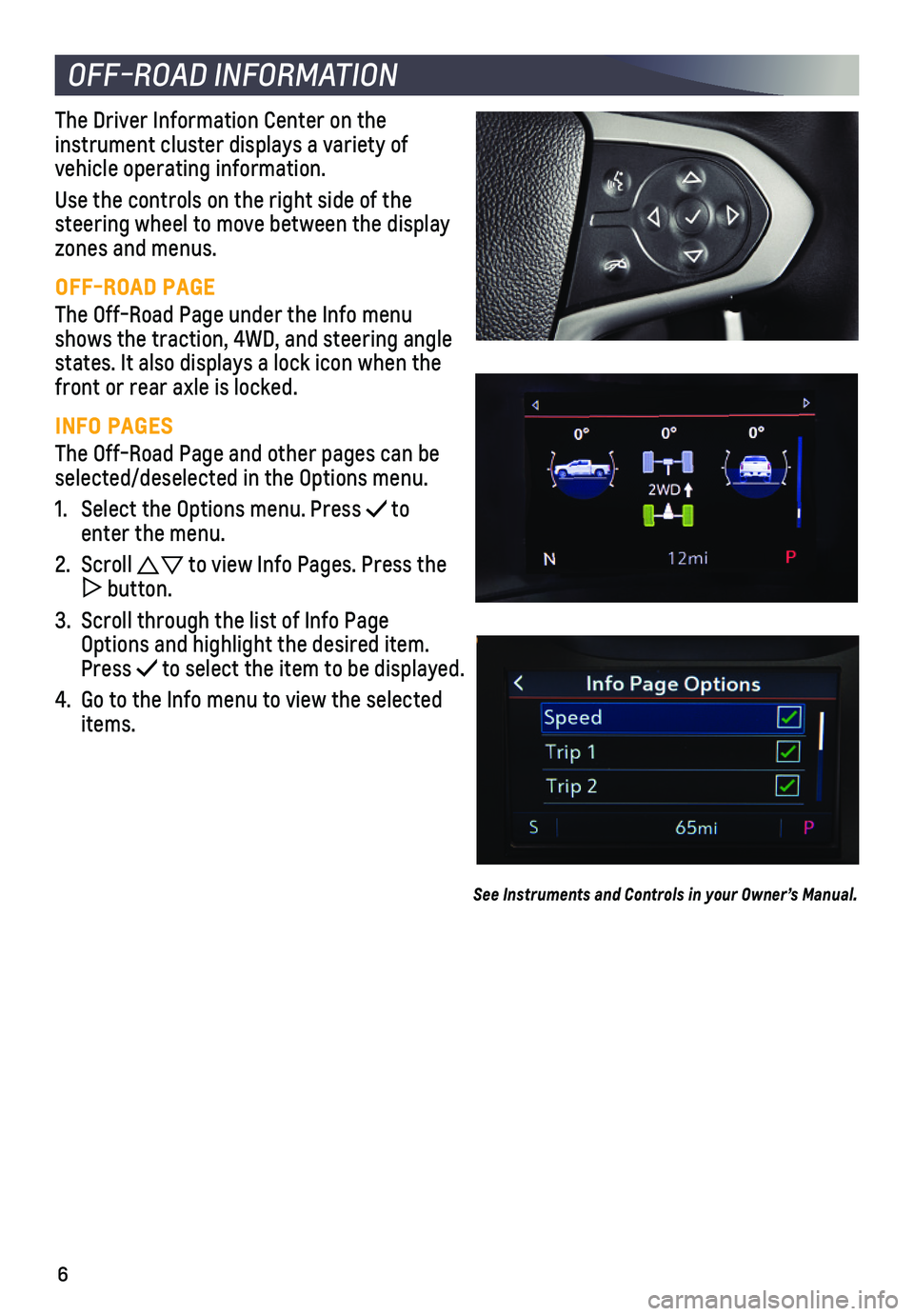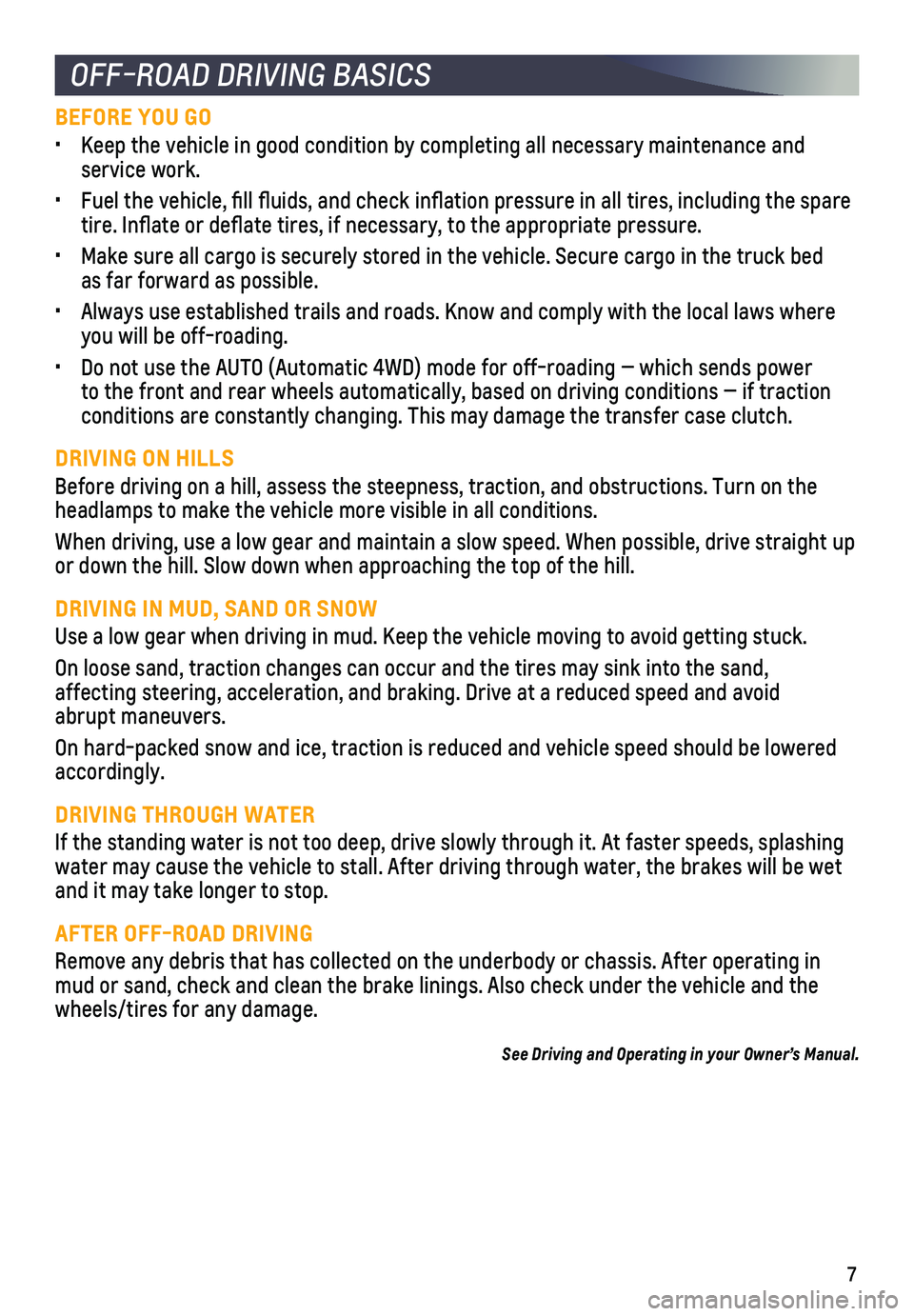steering CHEVROLET COLORADO 2021 Get To Know Guide ZR2
[x] Cancel search | Manufacturer: CHEVROLET, Model Year: 2021, Model line: COLORADO, Model: CHEVROLET COLORADO 2021Pages: 8, PDF Size: 1.39 MB
Page 6 of 8

6
OFF-ROAD INFORMATION
The Driver Information Center on the
instrument cluster displays a variety of vehicle operating information.
Use the controls on the right side of the steering wheel to move between the display zones and menus.
OFF-ROAD PAGE
The Off-Road Page under the Info menu shows the traction, 4WD, and steering angle states. It also displays a lock icon when the front or rear axle is locked.
INFO PAGES
The Off-Road Page and other pages can be selected/deselected in the Options menu.
1. Select the Options menu. Press to enter the menu.
2. Scroll to view Info Pages. Press the button.
3. Scroll through the list of Info Page Options and highlight the desired item. Press to select the item to be displayed.
4. Go to the Info menu to view the selected items.
See Instruments and Controls in your Owner’s Manual.
Page 7 of 8

7
OFF-ROAD DRIVING BASICS
BEFORE YOU GO
• Keep the vehicle in good condition by completing all necessary maintenan\
ce and service work.
• Fuel the vehicle, fill fluids, and check inflation pressure in all\
tires, including the spare tire. Inflate or deflate tires, if necessary, to the appropriate pre\
ssure.
• Make sure all cargo is securely stored in the vehicle. Secure cargo in t\
he truck bed as far forward as possible.
• Always use established trails and roads. Know and comply with the local \
laws where you will be off-roading.
• Do not use the AUTO (Automatic 4WD) mode for off-roading — which se\
nds power to the front and rear wheels automatically, based on driving conditions \
— if traction
conditions are constantly changing. This may damage the transfer case cl\
utch.
DRIVING ON HILLS
Before driving on a hill, assess the steepness, traction, and obstructio\
ns. Turn on the
headlamps to make the vehicle more visible in all conditions.
When driving, use a low gear and maintain a slow speed. When possible, d\
rive straight up or down the hill. Slow down when approaching the top of the hill.
DRIVING IN MUD, SAND OR SNOW
Use a low gear when driving in mud. Keep the vehicle moving to avoid get\
ting stuck.
On loose sand, traction changes can occur and the tires may sink into th\
e sand, affecting steering, acceleration, and braking. Drive at a reduced speed \
and avoid abrupt maneuvers.
On hard-packed snow and ice, traction is reduced and vehicle speed shoul\
d be lowered accordingly.
DRIVING THROUGH WATER
If the standing water is not too deep, drive slowly through it. At faste\
r speeds, splashing water may cause the vehicle to stall. After driving through water, the b\
rakes will be wet and it may take longer to stop.
AFTER OFF-ROAD DRIVING
Remove any debris that has collected on the underbody or chassis. After \
operating in mud or sand, check and clean the brake linings. Also check under the veh\
icle and the wheels/tires for any damage.
See Driving and Operating in your Owner’s Manual.